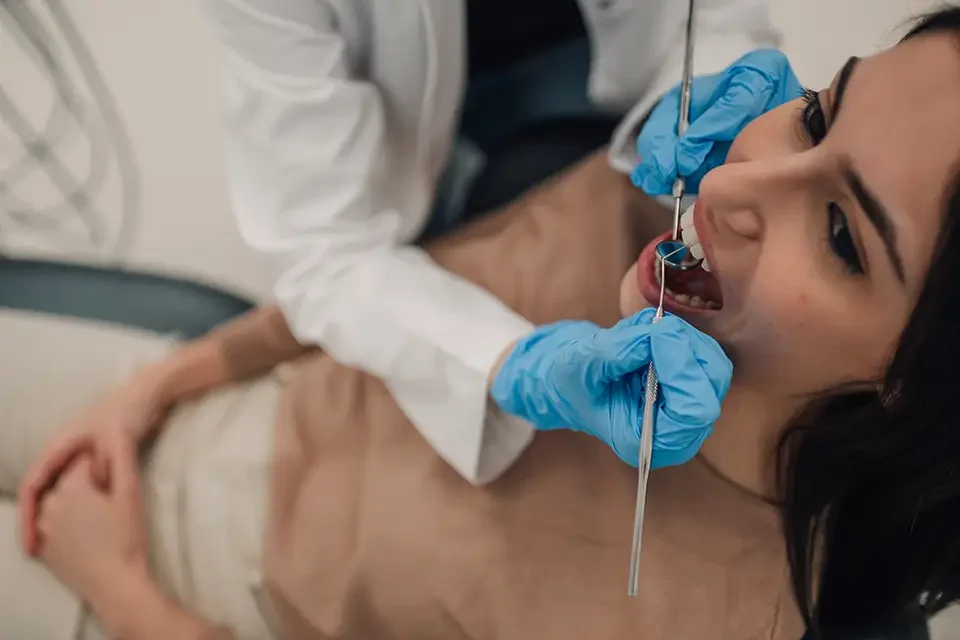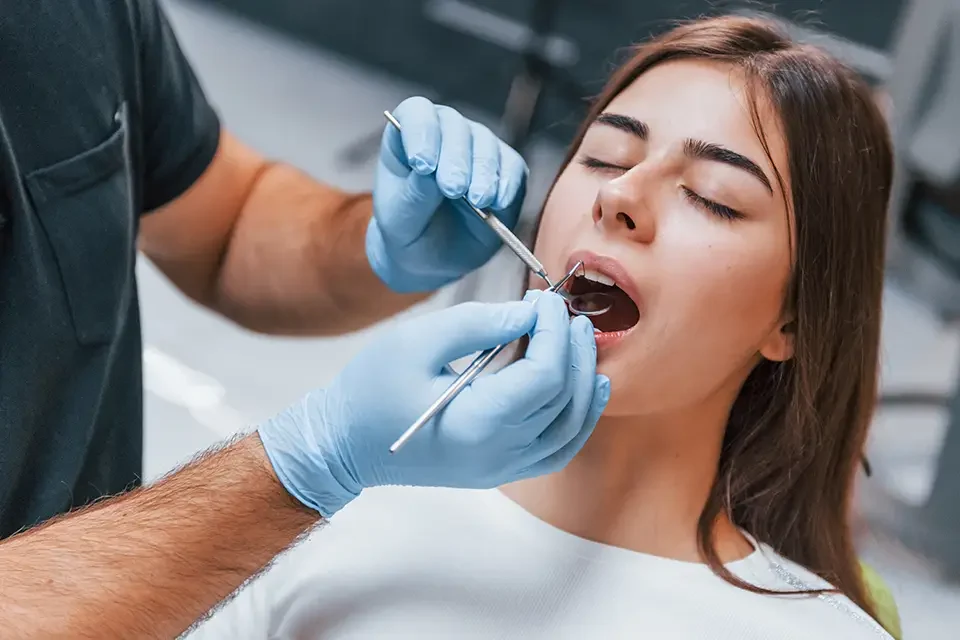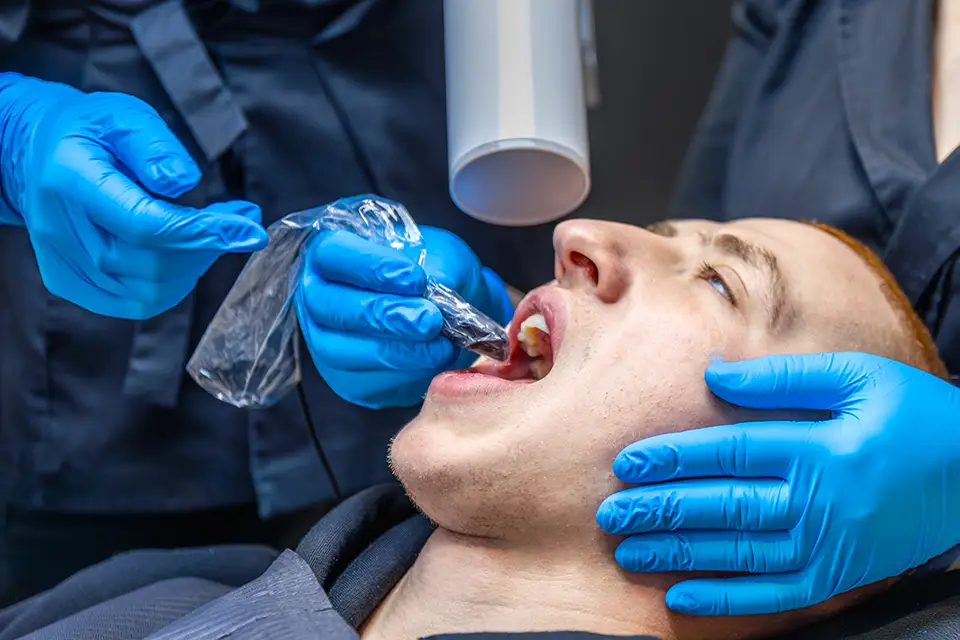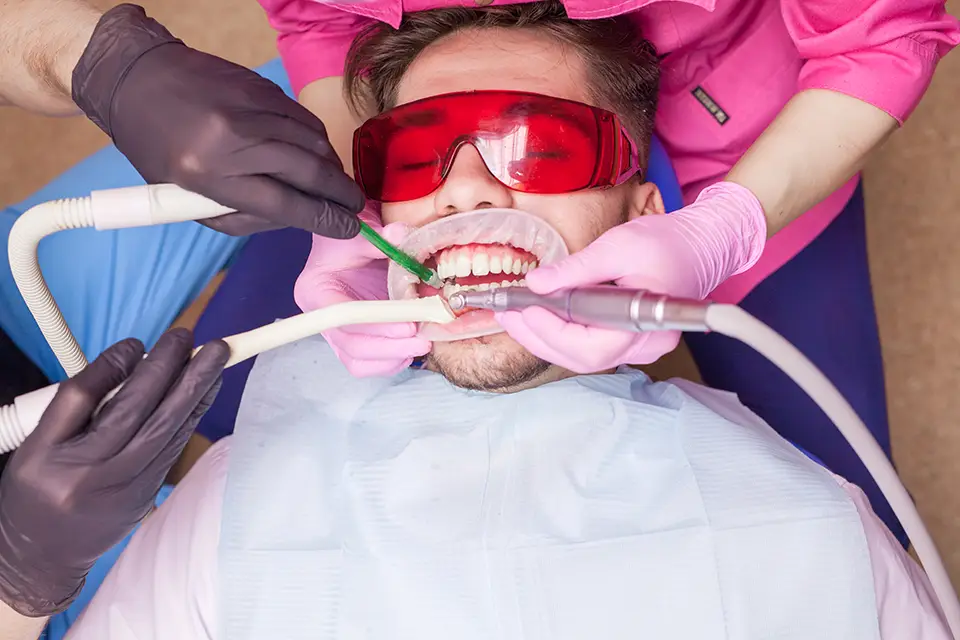It’s a strange and often confusing situation. A tooth that was causing severe pain suddenly feels fine. Or maybe you’ve noticed one of your teeth has slowly started to darken. While it’s tempting to hope the problem has fixed itself, these are often clear signals that something is wrong on the inside.At Sunshine Dentistry in Richmond Hill, we believe that understanding your oral health is the first step toward protecting it. When these symptoms appear, it’s often time for a dental necrosis diagnosis. Let’s walk through what that actually means for you and your tooth.
What’s Really Going On Inside the Tooth? Understanding Dental Necrosis Diagnosis
Think of the inside of your tooth as having a living core—a soft tissue called pulp that’s filled with nerves and blood vessels. It’s what keeps the tooth alive and able to feel temperature. But if that blood supply gets cut off, either from an injury or a deep infection, the pulp tissue dies.
This is what a dental necrosis diagnosis ultimately confirms: the pulp inside your tooth is no longer living. And because it can’t heal itself, the dead tissue becomes a source of infection that requires professional treatment.

Causes
A tooth doesn’t die overnight. It’s usually the result of one of a few key issues:
- Deep Tooth Decay: This is the most common reason. A cavity that is left untreated can allow bacteria to burrow deep inside, causing an infection that overwhelms the pulp.
- A Sudden Injury: A hard knock from a fall or sports accident can physically sever the tiny blood vessels at the tooth’s root, cutting off its lifeline.
- Repeated Dental Work: Sometimes, a tooth that has had multiple fillings or other procedures can experience cumulative trauma, eventually leading the pulp to fail.
Warning Signs That You Need a Dental Diagnosis
Your body often sends out some clear warning signs that you might need a dental necrosis diagnosis. The tricky part is that they aren’t always what you’d expect. Besides a toothache that suddenly disappears, you might notice:
- A change in color. The tooth may look darker than its neighbors, often turning grey, brown, or dull yellow.
- A small, recurring pimple on your gums. This is often a fistula, which is a sign that an infection inside is trying to drain.
- Pain only when you press down. Even if the nerve is dead, the infection can create pressure around the root, making it tender to bite on.
Dental Necrosis Diagnosis: How We Make a Definitive Diagnosis
When you come to our Richmond Hill office with these concerns, we don’t guess. We use a careful, step-by-step process to be certain about what’s happening.
First, we’ll talk with you and take a close look. Then, an X-ray gives us a picture of the root and the bone around it. A dark spot is a tell-tale sign of infection. Finally, we often perform a cold test. A healthy tooth will feel the cold briefly, but a necrotic tooth won’t feel it at all. This simple, painless test is how we make a definitive dental necrosis diagnosis.

After Dental Necrosis Diagnosis: What Happens Next?
The good news is that this is a fixable problem. The goal is to remove the source of the infection and save your tooth. The two proven treatments after a dental necrosis diagnosis are:
- Root Canal Therapy: This is the ideal solution. A root canal is not about causing pain; it’s about relieving it. We gently clean out the dead tissue, disinfect the inside of the tooth, and seal it to protect it for the future.
- Tooth Extraction: If the tooth is too damaged to be saved, removing it may be the healthiest option. We can then discuss excellent replacement options to keep your smile full and functional.
Frequently Asked Questions
1. Is a root canal going to be painful?
No, quite the opposite. The procedure is designed to get you out of pain, and we use local anesthesia to ensure you are completely comfortable throughout the process.
2. Can't the tooth just heal on its own now?
Unfortunately, it cannot. Once the pulp is gone, the tooth has no ability to heal itself, and the infection will persist until it is professionally treated.
3. Why fix it if it doesn't hurt anymore?
The lack of pain doesn’t mean the infection is gone. A dental necrosis diagnosis confirms there’s a source of infection that can damage your jawbone if left untreated.
If you are concerned about a tooth, we encourage you to schedule a consultation at our Richmond Hill clinic. The professional team at Sunshine Dentistry is committed to providing an accurate dental necrosis diagnosis and the highest standard of care.



